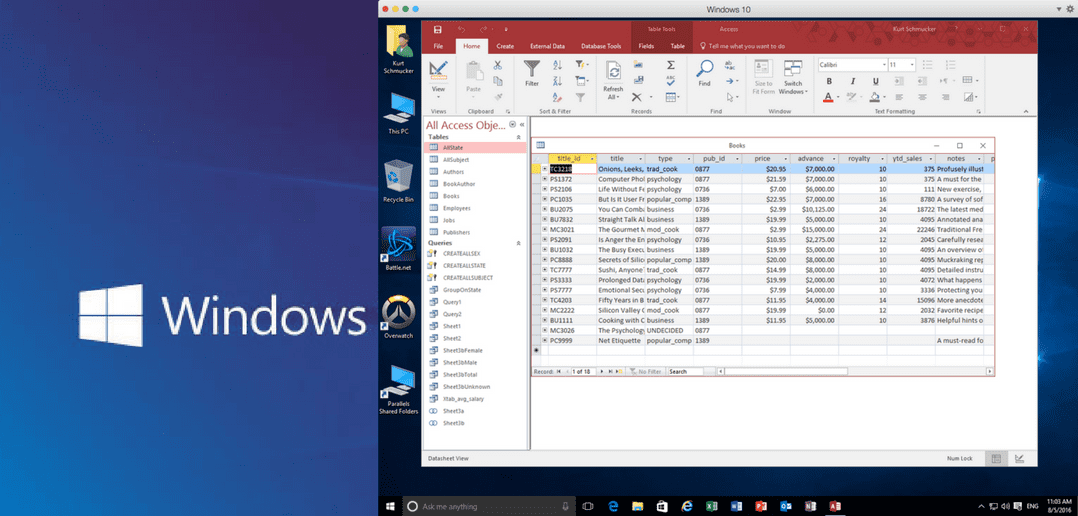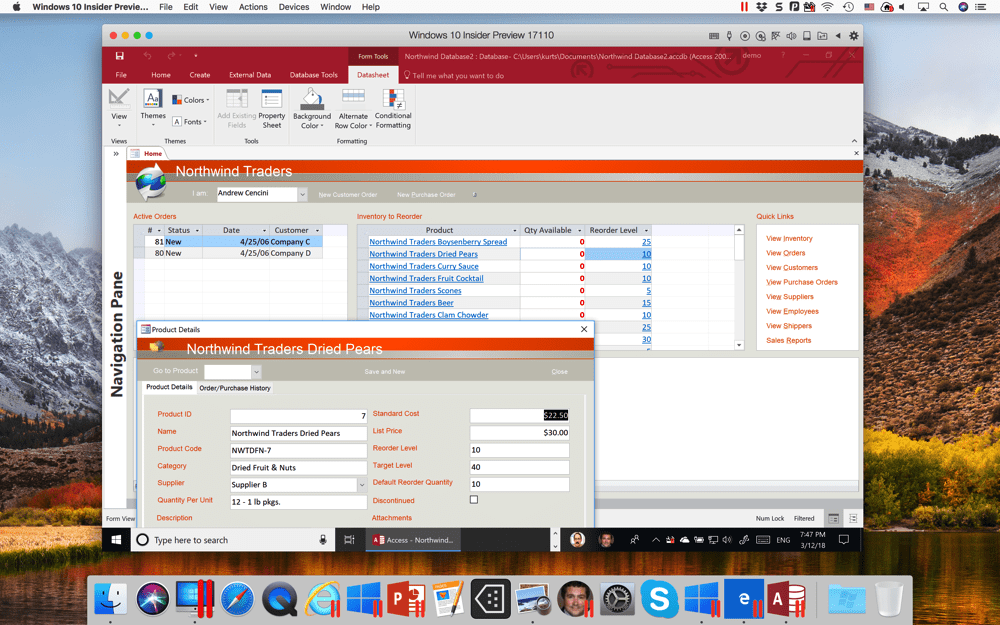When sharing a mail folder or your calendar, you can choose what level of access to grant. Here's a list of the permission levels available in Outlook 2016 for Mac, listed from least access to most access.
Most people only need to set permission levels for their calendar, so certain other people can see the details of their calendar, not just their free/busy times. 'Reviewer' is the permission level you'll most likely want to use for that purpose.
| Permission level | What it means to the person being given access |
|---|---|
| None | The person has no access. |
| Free/Busy Only | For mail, person has no access. For calendar, meeting proposer can see your free/busy times in the Scheduling Assistant or the Scheduling tab. This is the default setting for Office 365 accounts at Cornell. |
| Free/Busy,Time, Subject, and Location | For mail, person has no access. For calendar, meeting proposer can see your free/busy times, including details (but not the text of the meeting notes), in the Scheduling Assistant or the Scheduling tab. |
| Contributor | Person can create new items but cannot see any of the contents of the folder. (The folder's owner will be able to see them.) |
| Reviewer | Person can read items in the folder, but cannot create, edit, or delete items. |
| Non-editing Author | Person can create and read items, but not edit them. Person can delete items they've created, but cannot delete items created by the owner or other people. |
| Author | Person can create and read items. Person can edit and delete items they've created, but not items created by the owner or other people. |
| Publishing Author | Same as Author, plus person can create new sub-folders. |
| Editor | Person can create, read, edit, and delete all items, regardless of who created them. |
| Publishing Editor | Same as Editor, plus person can create new sub-folders. |
| Owner | Person has supreme executive power over your folder, as if it was their own. |
Since the MAC version of MS Office does not include MS Access (there is no MAC version of Access and never has been) , we often see questions similar to:
Firstly, if you fall into this category, Parallels Desktop for Mac can assist you with developing application software without reformatting or rebooting your machine. As seen below: Access 2016 in Win10 in Parallels Desktop. Secondly, users can create tables, queries, forms, and reports that connect their projects together with macros. Microsoft access mac free download - Parallels Desktop for Mac, Microsoft Virtual PC for Mac 7.0.3 Update, Apple Mac OS X Snow Leopard, and many more programs. Microsoft access 2016. Microsoft Office 2016 (codenamed Office 16) is a version of the Microsoft Office productivity suite, succeeding both Office 2013 and Office for Mac 2011, and preceding Office 2019 for both platforms. It was released on macOS on July 9, 2015 and on Microsoft Windows on September 22, 2015 for Office 365 subscribers. Mainstream support ends on October 13, 2020, and most editions have extended. Microsoft Office 2016 Access Mac To Your. Review, edit, analyze, and present your Office 2016 documents across any of your devicesfrom your PC or Mac to your Windows, Apple, and Android phones and tablets. Simply tell Word, Excel, or PowerPoint what you.

Outlook for Mac works with Microsoft Exchange, Microsoft 365, Outlook.com (including Hotmail and MSN), Gmail, Yahoo Mail, and iCloud Learn more about Microsoft 365 Microsoft 365 is a cloud-based subscription service that brings together premium versions of Word, Excel, PowerPoint, Outlook and OneDrive, with the best tools for the way people.

How can I run Microsoft Access on a MAC?”
in various forums. While it is true that you can’t get Access (and other programs) for MAC, there are still ways to run them on your MAC. Let’s take a closer look at each of these.

Possible Ways to Run MS Access on a MAC
Here are a couple solutions that I am aware of:
Virtualization Software
You can install any number of virtualization software programs, such as Parallels or VMWare Fusion or Oracle VirtualBox, to create a virtual machine in which you install Windows and then MS Office/Access and or any other Windows program(s) of your choosing. This does requires buying Parallels, and owing licenses for Windows and any other program you wish to install.
Once it is setup you can run launch your Windows Virtual Machine directly from within your MAC OS.
Bootcamp
Use Apple’s free Bootcamp software which will create a separate Windows formatted partition on the hard drive to install Windows and the appropriate drivers. It will run Windows as fast or faster than a PC of equivalent specification. The only downside (aside from the cost) is that you cannot run the Mac OS and the Windows OS simultaneously. Users who wanted to use Access would have to shut down the Mac OS and reboot into Windows.
So basically you split/partition your MAC hard drive to create a spot to install Windows. So your computer end up having both OSs installed and you pick which one to run at startup.

Remote Access Software
Another interesting option is to use remote access software, programs such as:
- Microsoft’s Remote Desktop
- TeamViewer
- etc…

to connect to a another computer. The remote access software simply transmits the image of the other computer’s screen image directly back to your local PC. So, you are in fact working directly on the other computer.
So, if you already have access to a Windows PC or server, you can use remote access software to connect to it and run your database.
CrossOver
I recently came across a program called CrossOver which states:
Run Microsoft Windows software on your Mac without buying a Windows license, rebooting or using a virtual machine
Buy Office 2016 For Mac
I don’t know anything more about this product, but it sounds very interesting and may be worth further investigation. Furthermore, they offer a trial version so you can take it for a test drive.
2016 Access For Mac Catalina
Microsoft Query
Access 2016 For Mac Download
If you simply need to access the data, but not interact with it (Add/Edit/Delete) and you have a copy of MS Office for MAC then you can use Microsoft Query to access the data via ODBC.
